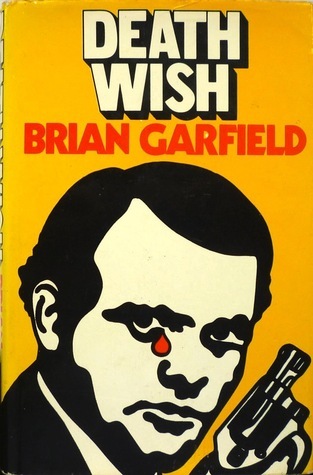"Death Wish" by Brian Garfield: Exploring Themes of Vengeance and Justice
When author Brian Garfield put pen to paper in the early 1970s to write Death Wish, he could not have anticipated the profound cultural impact it would have. The novel transcends its genre, weaving a complex tapestry of themes around the twin threads of vengeance and the ambiguity of justice. This article delves into how Garfield’s Death Wish captures the essence of these themes, offering a nuanced perspective on the vigilante justice narrative.

Death Wish introduces us to Paul Benjamin, a man whose life takes a tragic turn when his wife is murdered and his daughter is left comatose after a brutal attack. The inciting incident propels Benjamin into a dark journey not merely to avenge his loved ones but to explore the depths of human morality. Garfield’s narrative does not glorify Benjamin’s descent into vigilantism but instead questions the very nature of justice and self-administered retribution.
What sets Death Wish apart from other stories of its kind is Garfield’s nuanced portrayal of Paul Benjamin. Here, Garfield intertwines justice, retaliation, and the societal constructs of right and wrong. He examines how normal societal bonds can fray under extreme duress, leading to a situation where one might feel compelled to take the law into their own hands. Unlike other vigilante tales that might glorify this act, Garfield paints a more somber picture, highlighting the internal conflict and the psychological toll on Paul.
This theme is further explored through Garfield’s use of setting; the urban decay and societal unrest of 1970s New York City, where Death Wish is set, serves as a backdrop that reflects the inner turmoil of its protagonist. By placing Paul in this environment, Garfield underscores the isolation and alienation that fuels the Death Wish mentality. The city, in its sprawling, indifferent expanse, becomes a silent co-author of Paul’s story, emblematic of the chaos against which he seeks to impose order.
The character development is another cornerstone of the narrative. Paul’s transformation from an ordinary architect to an urban avenger is marked by subtle shifts in his demeanor and worldview. Garfield navigates this shift with a degree of realism that many contemporary thrillers fail to achieve. He doesn’t just change Paul; he peels back layers, revealing the psychological and moral complexities beneath the surface, making readers question the simplicity of vengeance versus justice.
Furthermore, Death Wish delves into the ethical quandaries of vigilante justice. Garfield’s depiction of Paul’s vigilantism is not without its consequences. Each kill leaves Paul more hollow, his moral compass swaying, pointing toward the bleak reality of his choices. This moral ambiguity is a testament to Garfield’s skill in exploring human emotions and societal constructs.
The public’s reaction to Paul’s actions, as portrayed by Garfield, adds another layer to the narrative. Fear, adulation, and condemnation from various quarters demonstrate the societal split on the issue of justice. One cannot help but reflect on how public demand for immediate justice can inadvertently endorse vigilantism, blurring the lines between legality and morality.
Death Wish ultimately leaves readers with more questions than answers. It does not preach or suggest a clear-cut resolution. Instead, Garfield leaves his readers to ponder the implications of personal justice, the ripple effects of revenge, and the endless cycle of violence that can ensue. By crafting a story that does not offer easy answers, Garfield challenges his audience to reconsider their perspectives on justice, revenge, and the roles individuals play within society.
Brian Garfield’s Death Wish is thus not just a story about a man seeking to punish his family’s attackers; it is an exploration into the soul of humanity, self-administered justice, and the complex interplay between society and its individuals. It offers a reflective, introspective look into themes of vengeance and justice, leaving an indelible mark on the reader, long after the last page is turned.




